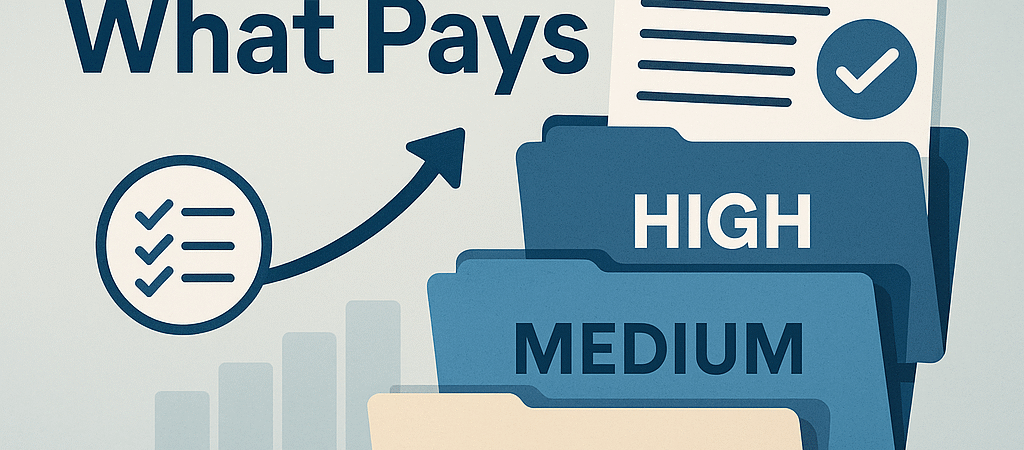Your cart is currently empty!
Not All Denials Are Worth It
Let’s be honest: appealing every denial isn’t efficient—it’s exhausting.
Too many revenue cycle teams default to working appeals based on when they show up in the queue, not based on strategic value. The result?
- Hours spent on $30 denials with a 5% win rate
- Delays in working $1,200 denials with high recovery potential
- Demoralized staff chasing losses instead of celebrating wins
It’s time to stop treating all denials the same.
The Real Cost of Low-Value Appeals
Every hour spent chasing an unwinnable appeal is an hour not spent recovering real revenue. And that’s not just lost dollars—it’s lost momentum.
- Staff fatigue increases
- Appeal success rates drop
- AR grows older
- Payer timelines are missed
Your team doesn’t need more denials. They need better denial strategy.
Introducing a Denial Scoring Model
A denial scoring model is a simple but powerful framework that assigns value to each denial based on strategic factors—so your team works smarter, not just harder.
Think of it as a triage system for appeals. High-scoring denials get priority. Low-scoring ones may be automated, downgraded, or written off when appropriate.
4 Factors to Include in Your Denial Scoring Model
1. Financial Value
- Higher-dollar denials should carry more weight.
- Example: Score +3 for denials over $500; +2 for $200–$500; +1 under $200.
2. Historical Appeal Success
- Use payer and CPT-level analytics to determine win rates.
- Example: Score +2 if success rate > 70%; 0 if < 30%.
3. Payer Behavior
- Some payers deny aggressively but pay on appeal; others rarely overturn.
- Example: Score +2 for payers with favorable appeal trends.
4. Appeal Effort
- Factor in the documentation burden and staff time needed.
- Example: Deduct –1 for high-effort appeals with low success odds.
Sample Denial Score Calculation
| Denial Type | Score | Appeal? |
|---|---|---|
| $1,250 E&M denial w/ strong notes | +3 (value) +2 (success) +1 (payer) –1 (effort) = 5 | ✅ YES |
| $80 duplicate denial | +1 (value) –1 (payer) –1 (effort) = –1 | ❌ SKIP |
This model helps your team focus on the best opportunities.
5 Steps to Implement a Scoring Model in Your Workflow
- Review Past Denials
Analyze 3–6 months of denial data to determine value thresholds and win rates. - Build Your Scoring Logic
Create a simple 4-point rubric using the factors above. Adjust as needed. - Train Staff on Scoring Priorities
Use examples to help billers understand the why behind the score. - Embed in Your EHR or Tracking Sheet
Use color coding, tags, or score fields to categorize incoming denials. - Audit Monthly and Refine
Adjust scores based on new data, payer trends, and staff feedback.
Final Thought
Every denial deserves a look—but not every denial deserves your team’s time.
By using a denial scoring model, you’ll:
✅ Increase recovered revenue
✅ Decrease wasted appeal effort
✅ Focus your team on what matters most
The smartest denial strategy isn’t to fight harder. It’s to fight smarter.

